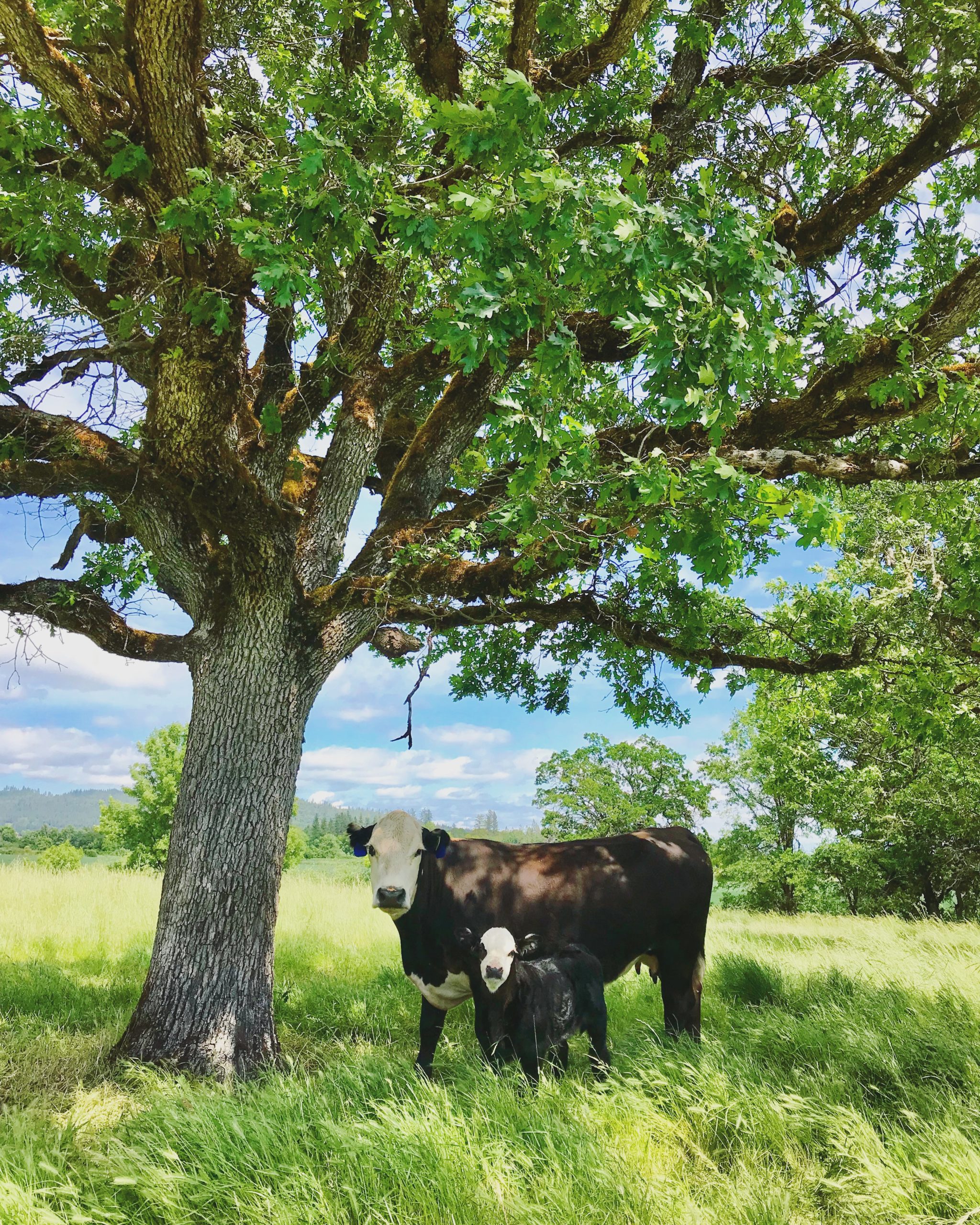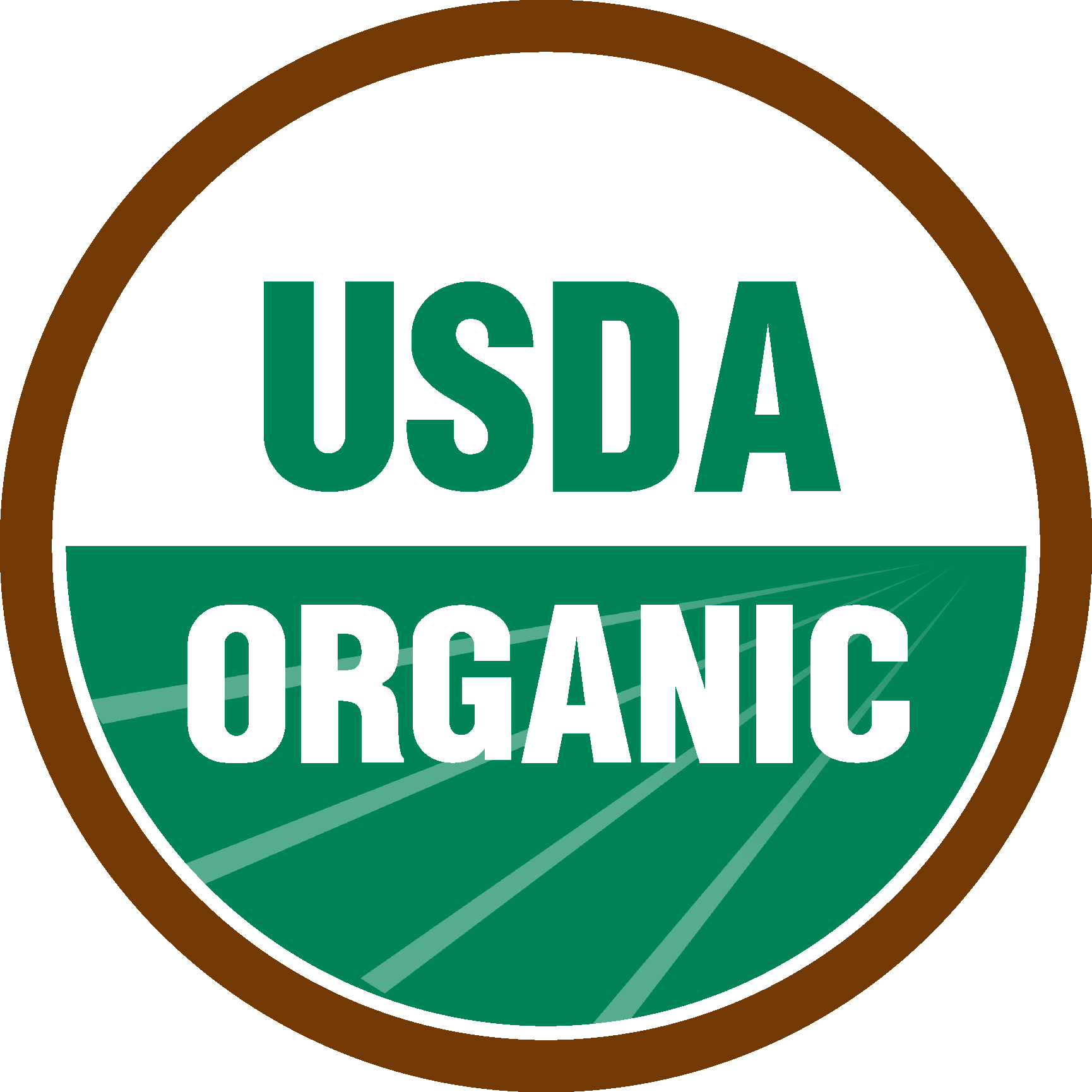
How are beef cattle raised?
As we peruse the labels of protein sources today, we seek to understand what the buzzwords actually mean. When looking at the labeling on USDA inspected beef there are four common terms you may come across, grain-finished, grass-finished, Certified Organic, or naturally raised. There are many ways to produce beef, it can be overwhelming. Let’s break down each of the possible production practices so you know exactly what kind of beef you would like!
Grain-Finished Beef
All beef calves are born on ranches. Calves are able to nurse their mommas and gradually begin eating grass themselves. When that calf reaches about 10 months of age they will be separated from their mother or “weaned.” This gives their momma a break, so she no longer has nutrients being pulled to provide milk. During their time on the ranch, they may become sick at some point. If so, they may be treated with an antibiotics to become better. They also could have received a growth promotant to increase the amount of weight they gain on the feed they consume. This decreases the amount of resources they need to produce more pounds beef and feed more families around the world.
On some commercial ranches they may keep the weaned calves. They put them in a separate field, or they begin feeding them chopped hay. We call this “backgrounding” them. Some ranches may sell their weaned calves to a different ranch (a stocker or backgrounder). A stocker’s business plan revolves around solely buying and selling calves. For grain-finished beef, once cattle have reached around 1,000 pounds they will be sold to a feedlot or moved to a feedlot pen. In a feedlot, as shown below, they are fed a well balanced and meticulously calculated diet. They are only there for about 120 days before being butchered at around 18 months of age. The majority of beef produced in the United States is grain-finished.

Grass-Finished Beef
As we discuss the many different ways beef is produced you will see a close connection between them all. A grass-fed animal is born on grass, just like every other calf. The calf is raised on its mother’s milk and grass. It is eventually weaned from it’s mother and turned back onto grass. Depending on where the cattle are located, they may not have access to grass all year. In that case, cattle are supplemented or fed with hay when necessary.
The process of getting an animal to gain weight on grass is very lengthy. They are constantly moving and grazing larger areas to meet their nutritional requirement each day. A true grass-fed animal is around three years of age by the time they reach the desired butcher weight. The flavor of grass-fed beef is noticeably different compared to grain-finished, it is all a matter of preference. There has been no scientific study that proves a nutritional difference between the two.

Certified Organic Beef
Certified Organic Beef is most likely going to be a grass-fed animal. If a protein is USDA Organic that animal never received an antibiotic, a growth promotant, or consumed 100% organic feed. Also, that animal only grazed on Certified Organic pastures. As you can imagine, these are stringent requirements that would be extremely difficult to meet. Organic feed production is just a fraction of the feedstuff that is produced conventionally. Access to organic feedstuff is the limiting factor on the expansion of organic beef.

Naturally Raised Beef
A producer can market their beef as “Naturally Raised” if their cattle have never received antibiotics or growth promoting hormones. Since those are the only two requirements, Naturally Raised Beef can be grass-fed or grain-finished.
Similar to us, we sometimes do get sick as the weather changes drastically or at times when we are stressed. You may be wondering, “What does a rancher or farmer do if their animal becomes ill and they are raising Certified Organic or Naturally Raised Beef?” They treat that animal with whatever is necessary to make them better. If they use an antibiotic, that animal can no longer be sold as Certified Organic or Naturally Raised.
Informed Beef Consumer
Now that we have discussed the four common beef production methods, you can make an informed decision about what beef is best for you and your family. No matter which type you choose, you can be confident that it will be a safe, wholesome, and nutritious. It is a complete protein source that you can feel good about serving on your table.